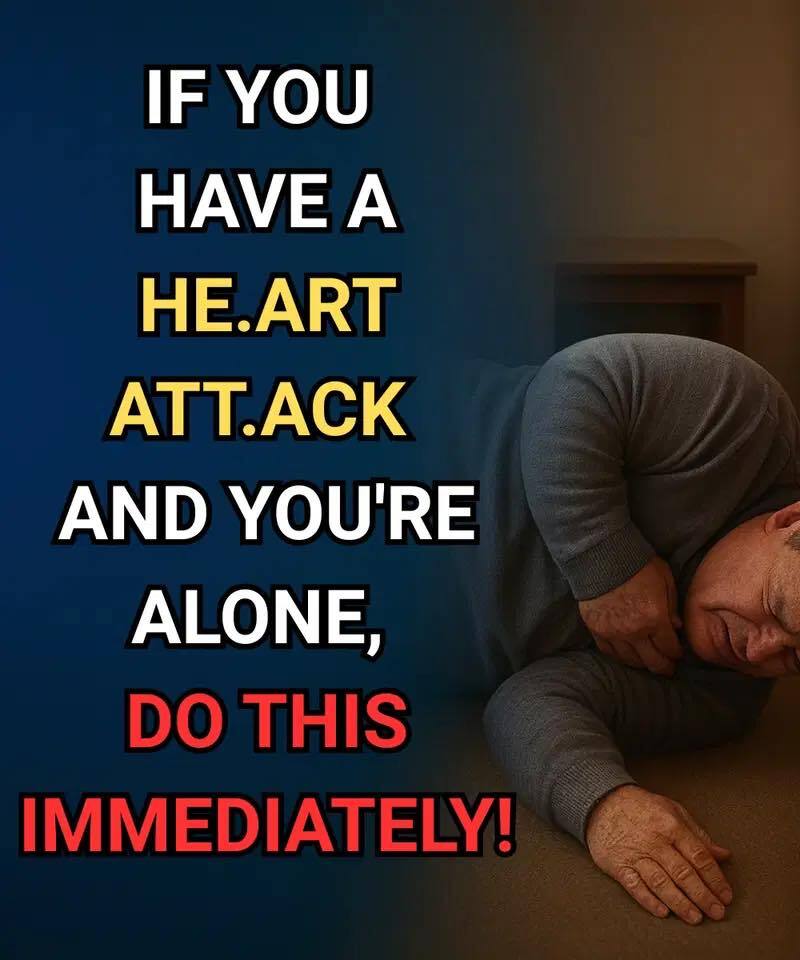When a sudden health crisis strikes, especially one that affects the heart, those first moments can feel overwhelming. Many adults, particularly those living alone or spending long stretches of the day by themselves, worry about what would happen if they began feeling unwell with no one nearby. While professional medical help is always the safest and most reliable option, understanding how to stay calm and focused can make a meaningful difference while you wait for assistance.
Health organizations consistently remind us that heart-related emergencies often arrive with little warning. Feelings of tightness in the chest, dizziness, unusual fatigue, or a sense that something “isn’t right” can cause confusion or panic. Instead of relying on medication or equipment, the most important step is staying composed enough to call for emergency help and support your body until trained responders arrive.
Below is a careful, safe, and reader-friendly look at three general awareness techniques often discussed in first-aid education. These are not medical treatments and should never replace calling emergency services. But understanding them may help you stay focused, steady, and alert in those first critical minutes.
1. Controlled Breathing and Steady Coughing to Maintain Focus
When your body suddenly feels off—perhaps lightheaded, shaky, or unusually short of breath—your instinct may be to panic. Instead, one of the most helpful steps is to focus on slow, deliberate breathing that helps settle your mind and maintain steadiness.
Some first-aid courses describe a practice sometimes called “cough breathing,” where a person takes slow breaths and follows with gentle, deliberate coughs. This approach is not a treatment for heart problems or any specific condition. Rather, it can help keep you alert and focused long enough to call for help if you feel unwell.
How to practice calm breathing:
Take slow breaths through your nose.
Exhale gently through your mouth.
If it helps you stay focused, add a light, controlled cough.
Repeat this pattern while you prepare to call emergency services.
This gentle rhythm encourages you to stay awake, aware, and able to speak clearly when you reach out for help. Think of it as a grounding technique—similar to practices used in relaxation or meditation—that keeps the mind steady when your body feels unsettled.
2. Using Your Hands to Stay Steady and Aware
Some people find that placing a hand over the center of the chest provides a sense of stability during frightening symptoms. This simple motion does not treat any medical condition, but it can help you stay centered and conscious of your breathing.
In certain first-aid discussions, there is mention of using light touch or pressure to help regain focus during moments of overwhelming discomfort. Again, this is not a medical intervention, and it should never be seen as a replacement for trained care. But becoming aware of your posture, the position of your shoulders, and the steadiness of your breath can play a role in keeping you alert.
If you begin to feel faint or confused:
Sit down or lean against something stable.
Place a hand lightly on your chest.
Breathe slowly and evenly.
Reach for your phone as soon as you are able and dial emergency services.
The primary goal is to prevent a fall, stay conscious, and ensure that help is on the way.
3. Hand Pressure Point to Support Alertness
Many traditional wellness practices, particularly those with roots in Eastern methods, highlight certain pressure points that may help a person remain aware and grounded. One commonly mentioned point lies in the fleshy area between the thumb and index finger. Pressing this spot firmly is believed by some to help promote alertness.
While these techniques are not proven medical treatments and should not be relied upon for any heart-related emergency, some people find them calming during stressful health episodes.
If you want to use this grounding technique:
Press gently but firmly on the soft area between your thumb and index finger.
Hold for a few seconds.
Repeat if needed while keeping your breathing slow and steady.
This simple action can help you stay focused while you wait for help or until symptoms settle enough for you to communicate clearly with emergency responders.
What to Do First and Above All
No matter what you feel or which calming techniques you try, the most important action is reaching out for professional help. Heart-related symptoms need immediate attention from trained medical providers. Time and expertise matter.
If you begin experiencing unusual chest pressure, sudden shortness of breath, intense discomfort, weakness, or anything that feels alarming:
Call emergency services immediately.
If you feel faint, lie down or sit in a safe position to prevent falling.
Unlock your door if possible so responders can reach you quickly.
Avoid driving yourself, even if you think you can make it.
Your goal is simple but vital: stay calm, stay awake, and let professionals take over as soon as they arrive.
A Final Word of Encouragement
Facing a health emergency while alone can be one of the most frightening experiences in life, especially as we grow older. Yet knowledge, preparation, and calm thinking can make those moments more manageable. Understanding how to slow your breathing, stay aware of your surroundings, and focus your mind can provide support while you wait for help.
You don’t need medical equipment or advanced techniques; you just need a plan and the confidence to act on it. With steady breathing, a calm mindset, and an immediate call to emergency services, you give yourself the best possible chance for a safe outcome.
